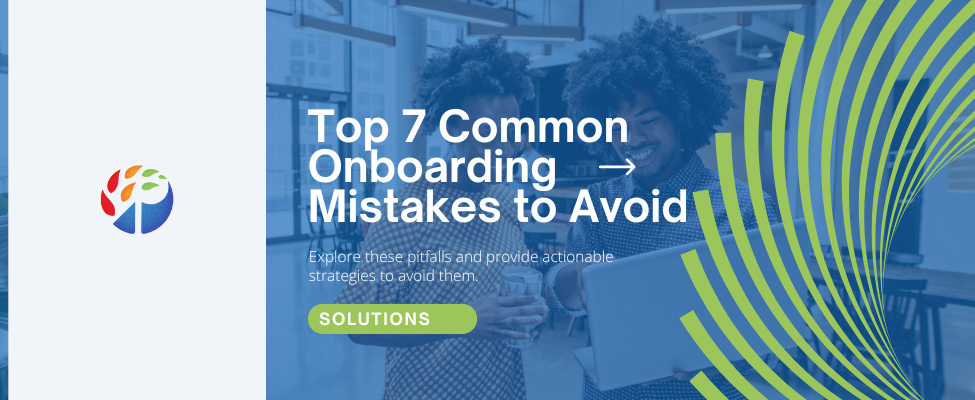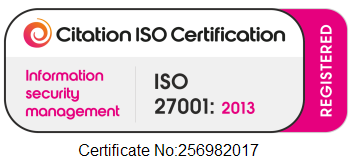Top 7 Common Onboarding Mistakes to Avoid
Setting the tone for a new hire’s experience and influencing their long-term engagement and productivity is a pivotal part of building a holistic onboarding strategy. However, many organisations struggle to perfect this process, often falling into common mistakes that can lead to decreased employee satisfaction, higher turnover rates, and inefficiencies. Here, we’ll explore these pitfalls and provide actionable strategies to avoid them.
-
Lack of Preparation
Common Mistake: Many companies fail to adequately prepare for a new hire’s first day, leading to a disorganised and underwhelming start. This can create a negative first impression and leave new employees feeling undervalued and stressed.
Solution: Preparation is key. Ensure that all necessary equipment, access credentials, and workspace arrangements are ready before the new hire’s arrival. Send a welcome email with a detailed agenda for the first week, including introductions to team members, scheduled meetings, and an overview of their role and responsibilities.
-
Inadequate Training and Resources
Common Mistake: New hires often receive insufficient training or lack access to essential resources, making it difficult for them to perform their duties effectively. This can lead to frustration and decreased productivity.
Solution: Develop a comprehensive training program that covers both general company information and specific job-related tasks. Provide access to resources such as manuals, software, and mentorship opportunities. Consider using e-learning platforms to offer continuous training and development.
-
Information Overload
Common Mistake: Bombarding new hires with too much information too quickly can overwhelm them, leading to confusion and burnout.
Solution: Implement a phased onboarding approach. Spread out training and information sessions over several weeks or months, allowing new hires to gradually absorb and retain critical knowledge. Use checklists and milestones to track progress and ensure they have mastered each aspect before moving on to the next.
-
Poor Cultural Integration
Common Mistake: Failing to integrate new hires into the company culture can result in feelings of isolation and disengagement.
Solution: Foster a sense of belonging from day one. Assign a mentor or buddy to help the new hire navigate the company culture and build relationships. Encourage participation in team-building activities and social events. Communicate the company’s values, mission, and vision clearly, and demonstrate how their role aligns with these elements.
-
Lack of Feedback and Communication
Common Mistake: Without regular feedback and open communication channels, new hires may feel uncertain about their performance and unsure about their progress.
Solution: Schedule regular check-ins and feedback sessions with new hires. Use these meetings to discuss their experiences, address any concerns, and provide constructive feedback. Encourage an open-door policy where new hires feel comfortable reaching out for help or clarification.
-
Ignoring the Long-term Onboarding Process
Common Mistake: Treating onboarding as a one-time event rather than an ongoing process can lead to gaps in knowledge and engagement.
Solution: Extend onboarding beyond the initial few weeks. Develop a structured onboarding program that spans several months, with ongoing training, regular check-ins, and opportunities for new hires to provide feedback on their experience. Continuously refine the process based on this feedback to improve future onboarding efforts.
-
Neglecting Remote Onboarding Needs
Common Mistake: In the era of remote work, failing to adapt onboarding processes to suit remote employees can result in a disjointed and ineffective experience.
Solution: Tailor your onboarding program to accommodate remote employees. Use video conferencing tools for face-to-face interactions, provide virtual tours of the company, and ensure remote workers have access to all necessary tools and resources. Foster a sense of community through virtual team-building activities and regular online check-ins.
Effective onboarding is a crucial investment in your workforce, directly impacting employee satisfaction, retention, and productivity. By avoiding these common mistakes and implementing thoughtful, structured onboarding processes, your company can create a positive and engaging experience for new hires, setting them up for success from day one.
Remember, onboarding is not just about helping new employees adjust to their roles—it’s about welcoming them into your company’s community and setting the foundation for their future growth and contributions. With careful planning and continuous improvement, your onboarding process can become a key driver of your organisation’s success.




Comments are closed